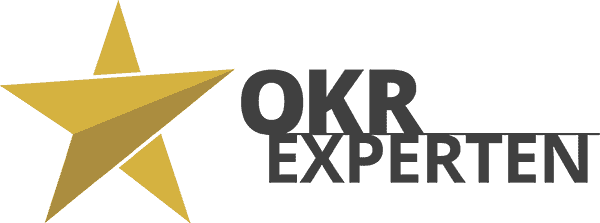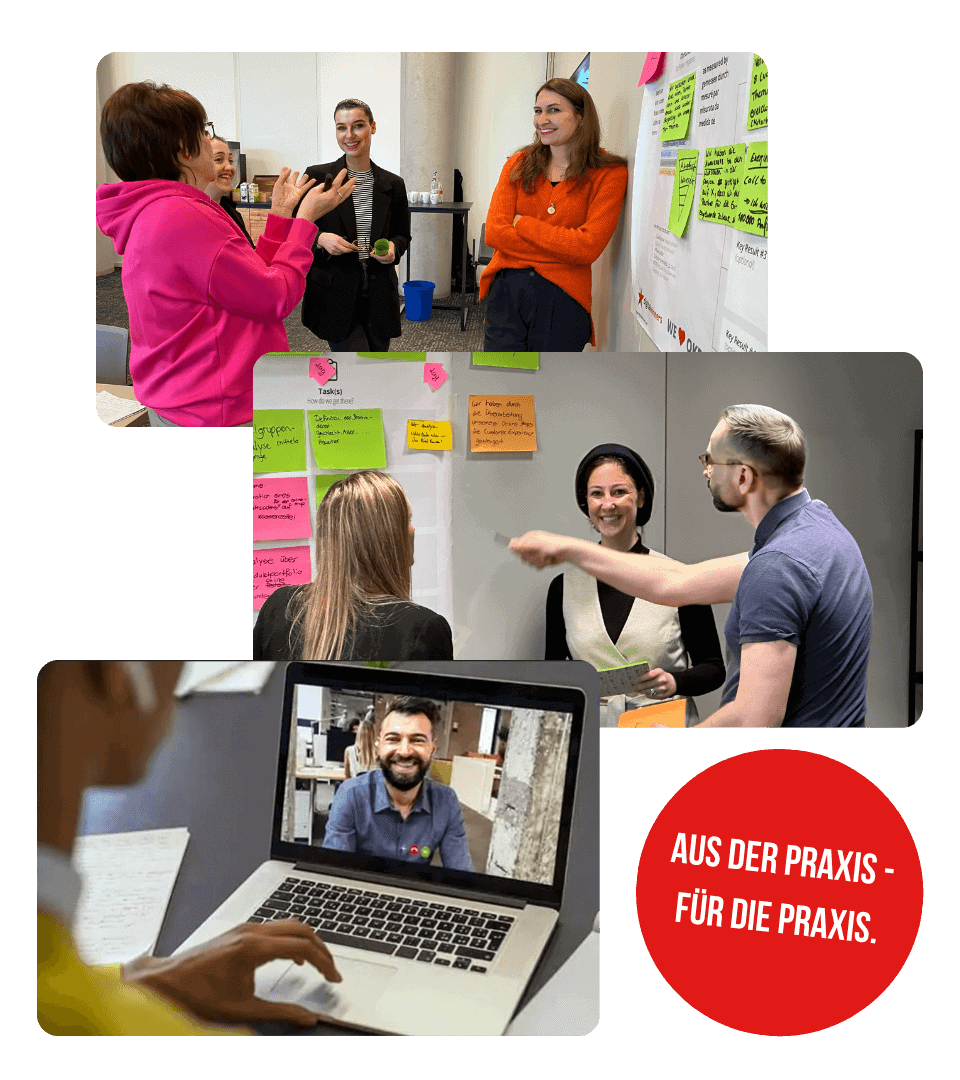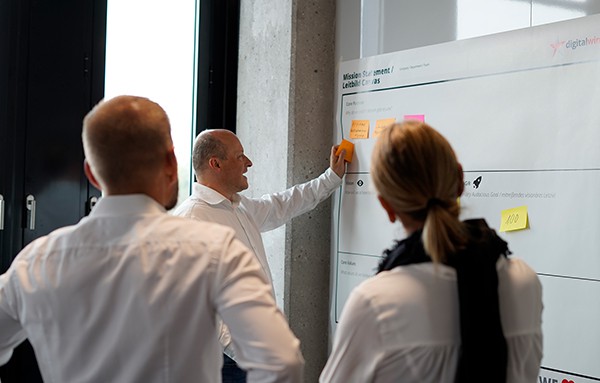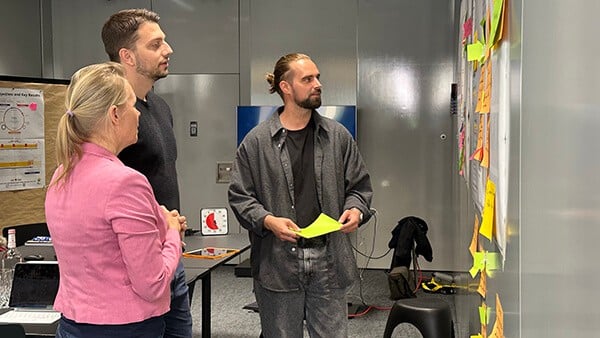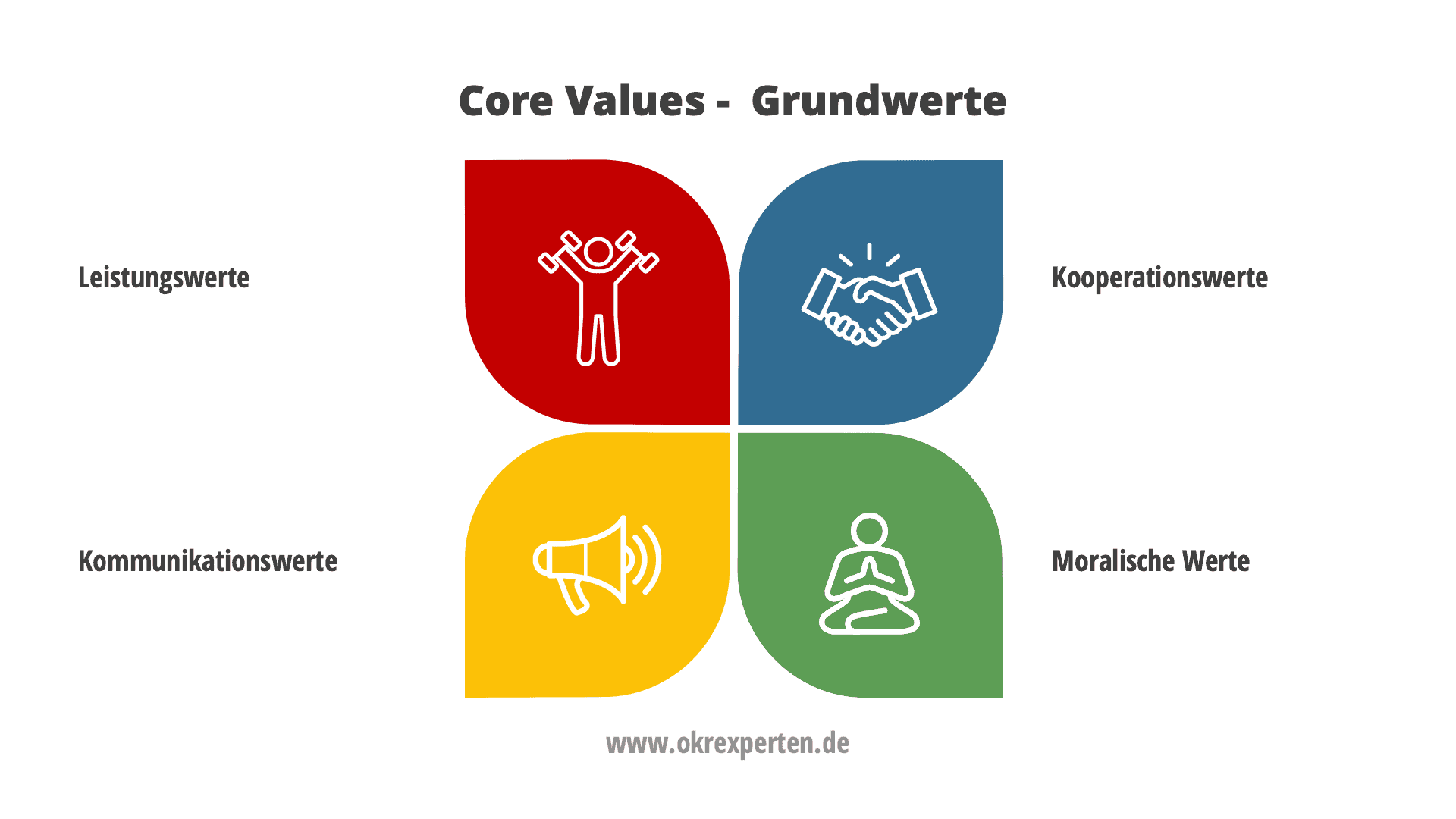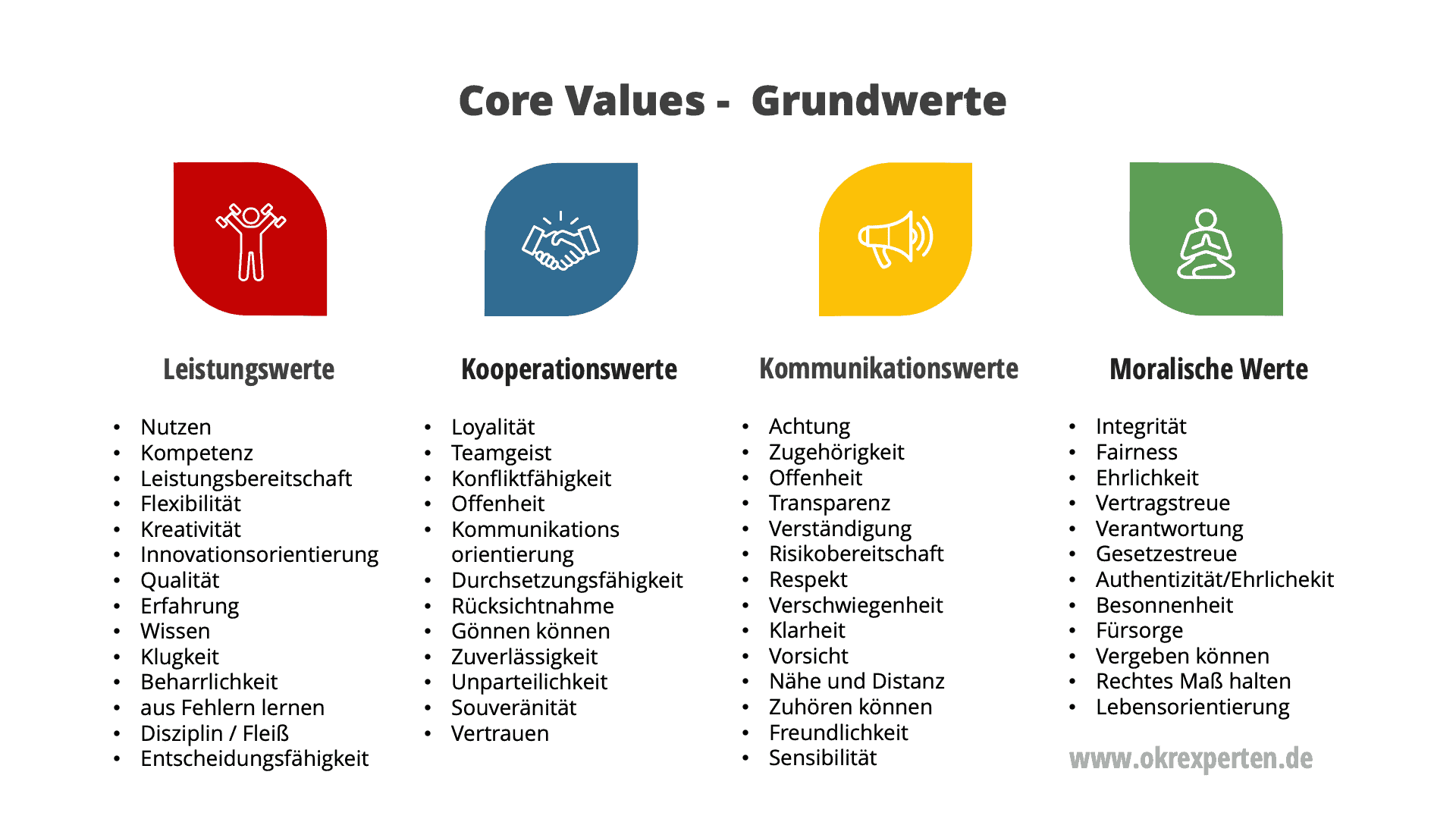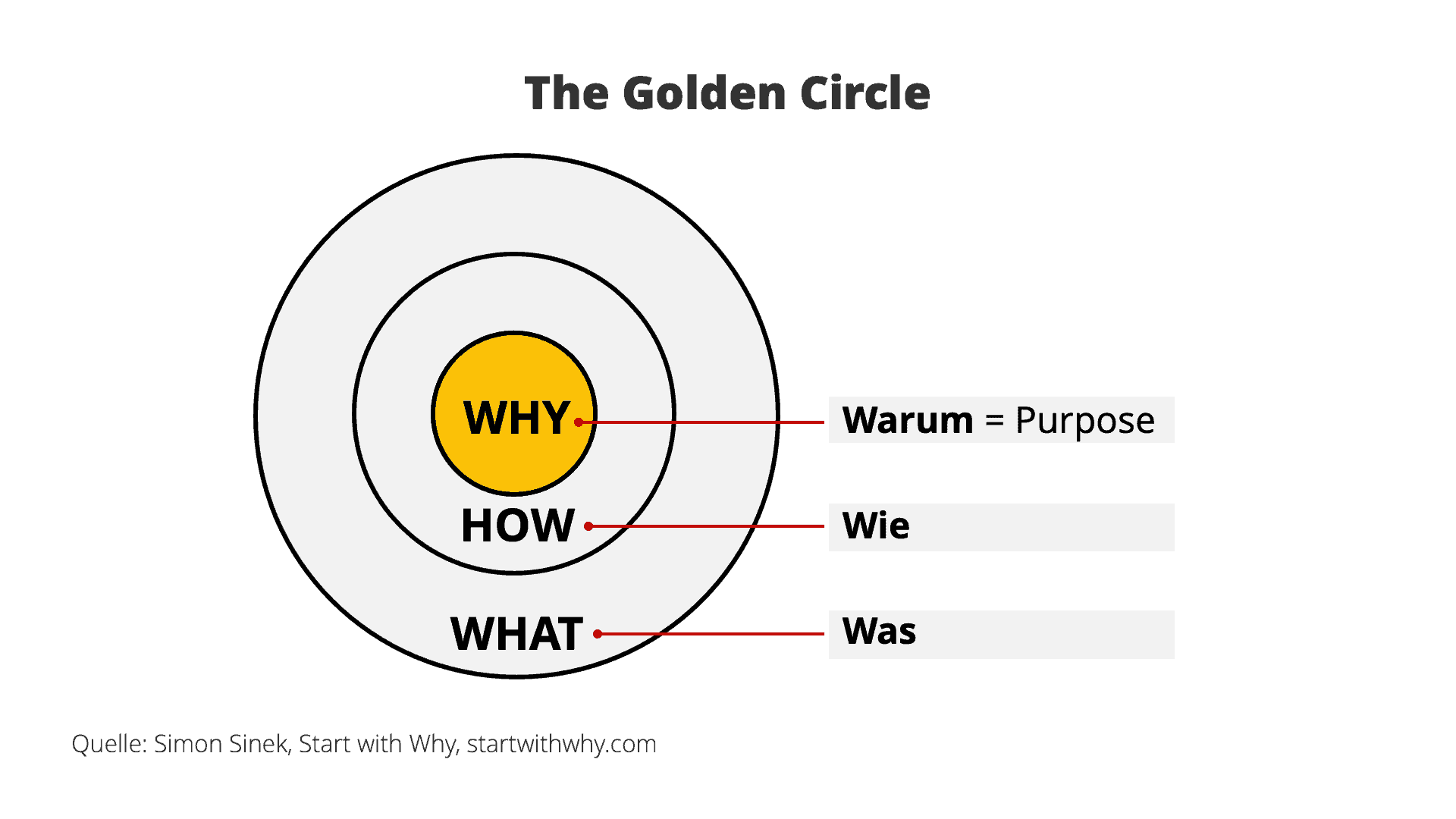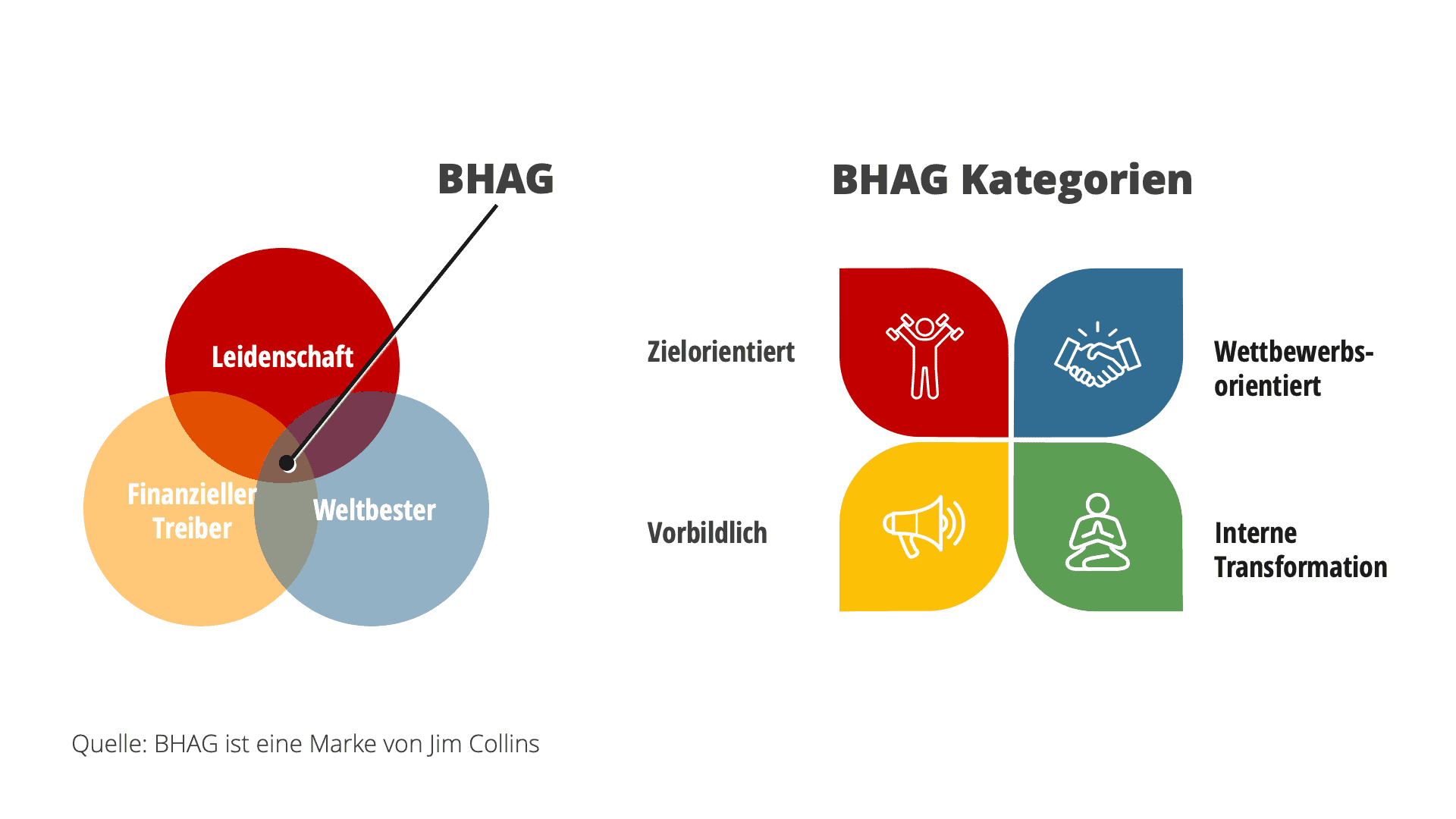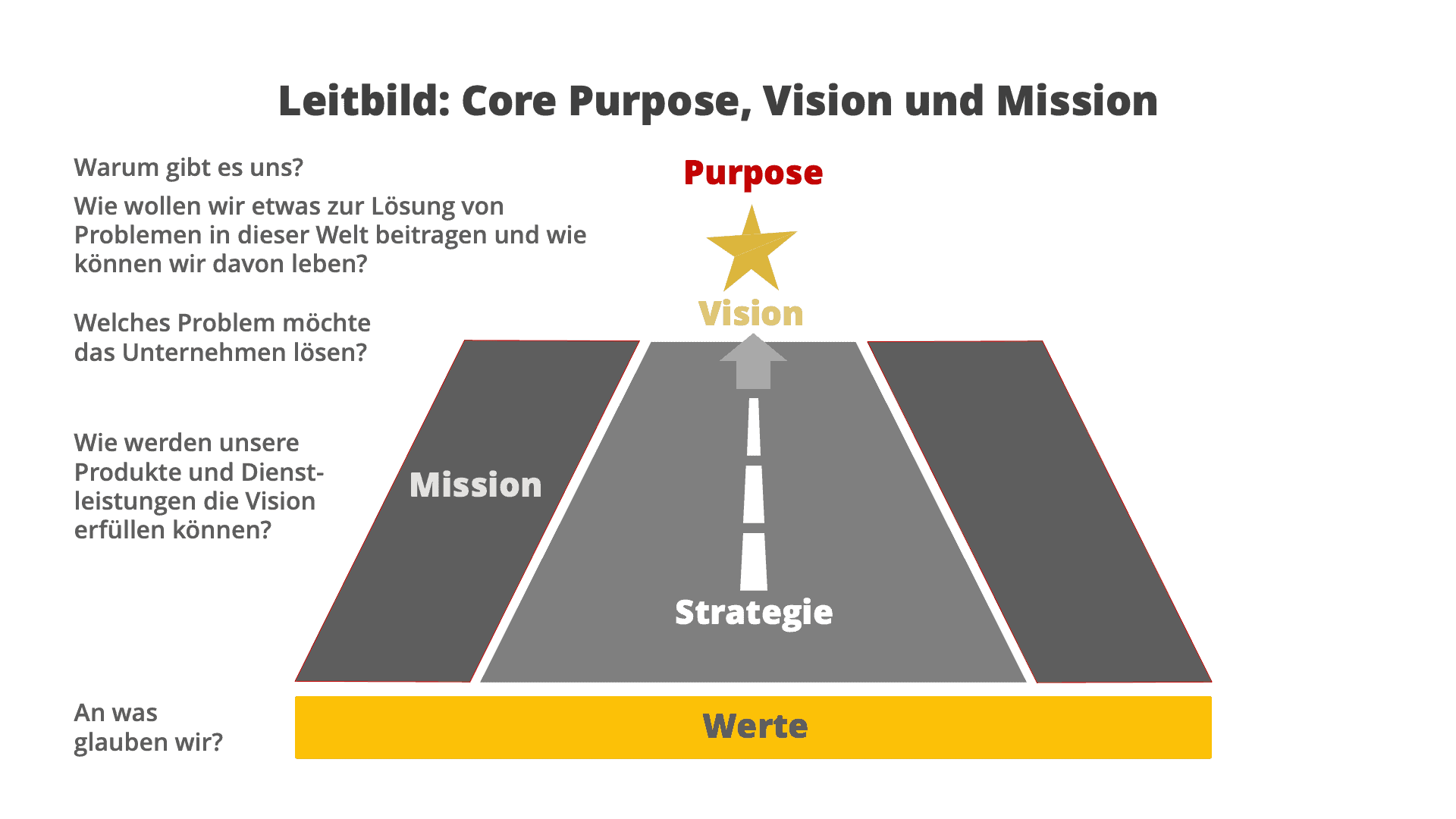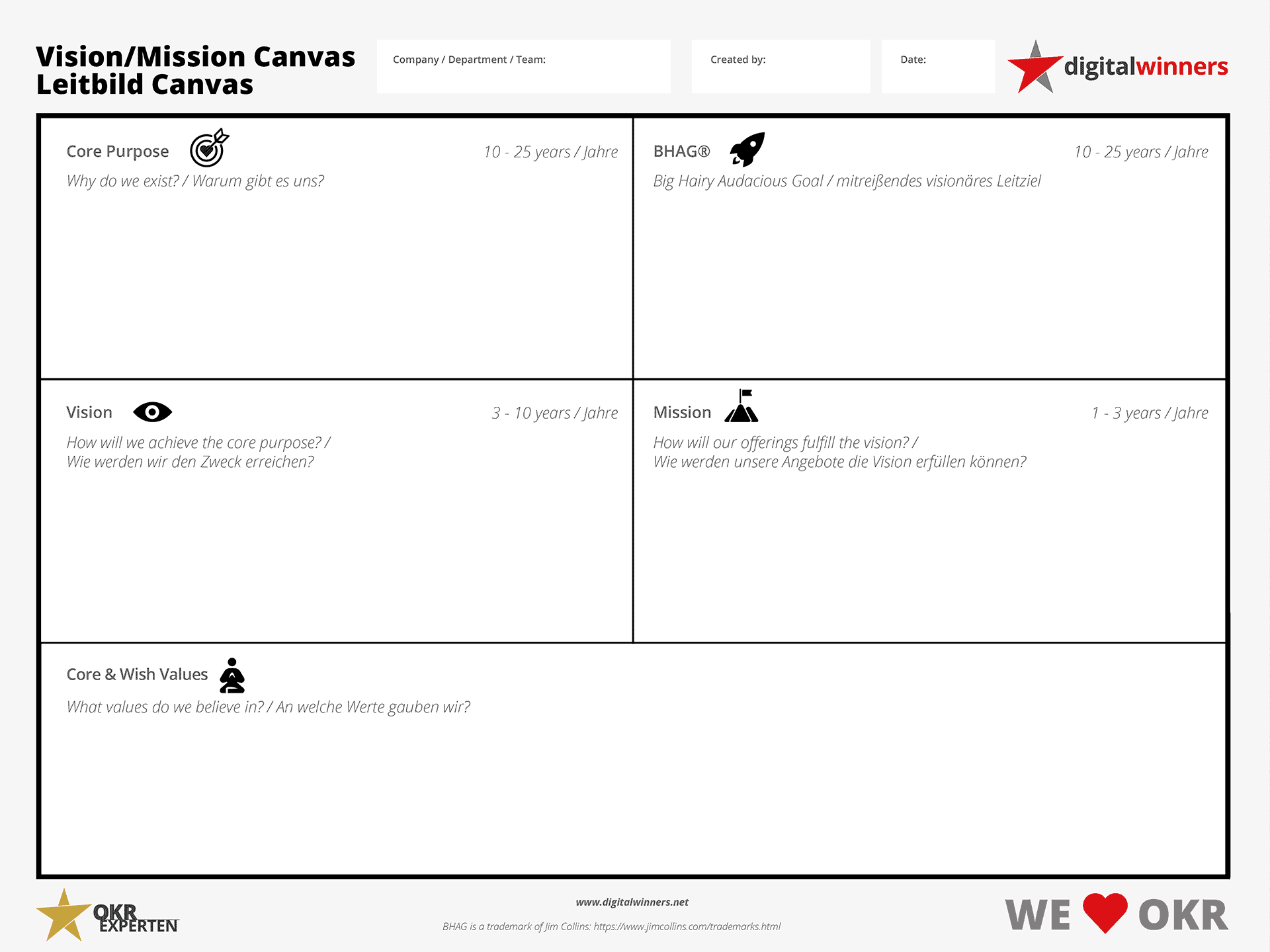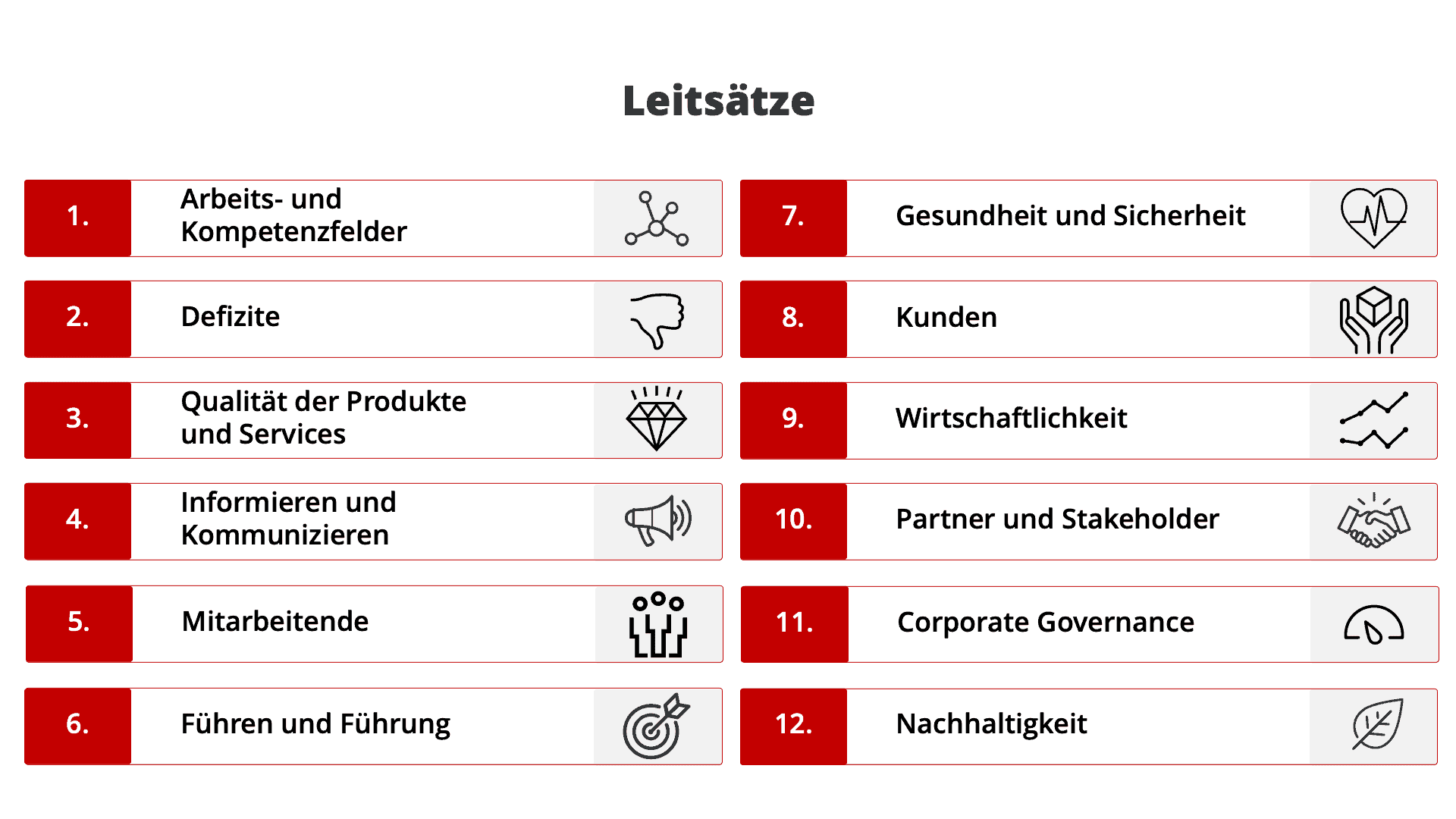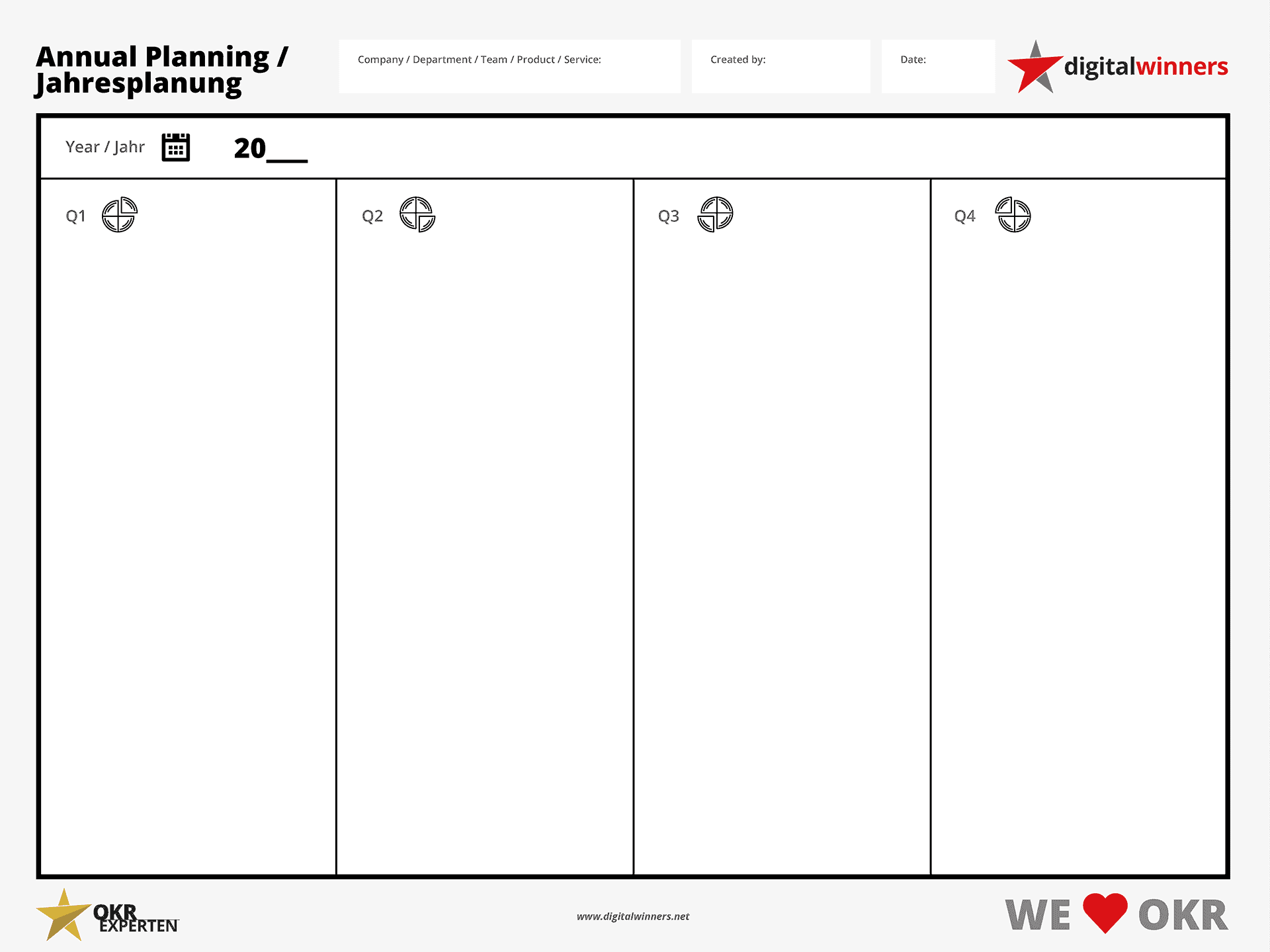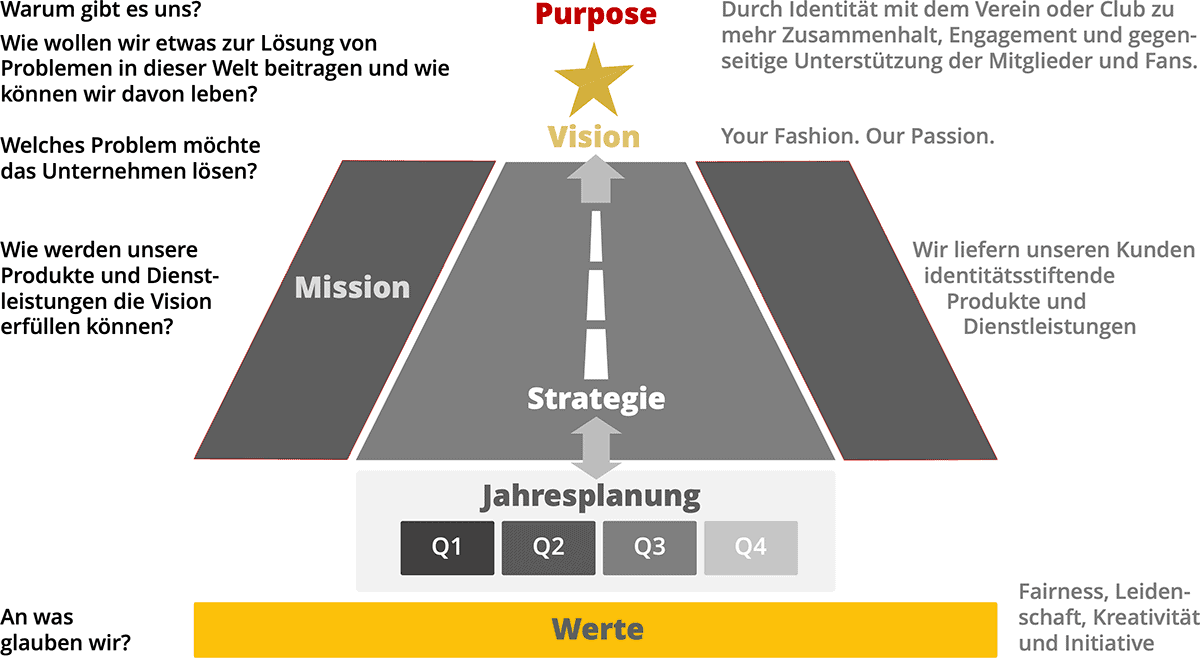Developing a mission statement for a company – 8 steps to a mission statement
How a mission statement helps companies to gain more identity. In this way, you can develop an authentic and inspiring mission statement for your company or organization.
What is a mission statement? – Mission statement Definition
The corporate mission statement formulates the desired identity of your company.
It serves both as a starting point and as a target definition for the desired changes. As a “corporate philosophy”, it provides orientation even in turbulent times and creates certainty of action.
It describes “The nature of an organization” and answers the following questions, among others:
- Who are we? – The question of identity and goals
- Who do we benefit? – The question of the market, the customers and the target groups
- How do we want to work together? – The question of management principles and the nature of cooperation
Here is the OKR experts‘ mission statement.
Leitbild Erstellung Workshop
Wir, die OKR-Experten, unterstützen Sie gerne bei der Erstellung Ihres Unternehmensleitbildes:
- Praxiserprobtes Workshopformat
- Purpose, Vision, Mission & Werte
- Authentisch, klar & inspirierend
Definition of mission statement: How is a mission statement developed?
We usually start with the core values – these are the basic values with general principles of behavior, for example on leadership, cooperation and participation. Then we continue with the Wish Values – these are the values that we want to strengthen, introduce and optimize. We use various creativity techniques to develop them.
In the next step, we develop the core purpose, the guiding principle or motto: this is the preamble to the mission statement and states the most important things in advance. It gets to the heart of the company’s purpose by formulating a simple answer to the question “Why do we exist?”.
Then we develop a BHAG (Big Hairy Audacious Goal) – a deliberately big, boldly formulated ambitious goal for the next 10 to 25 years. It is also known as the “Ultimate Goal”. One example of this is: 1 million jerseys sold by 2040. BHAG is a registered trademark of Jim Collins.
In the next step, we develop the vision – this is the company’s North Star and answers the question of what problem the company wants to solve. The key question is: “How will we be able to achieve the purpose? How can we best implement our core purpose – based on our competencies and market conditions – over the next 10 years?”.
The mission is then formulated from this – this is the guard rail on the way to the vision. It concretizes the achievement of the North Star’s goals with the “how” question: “How will our products and services be able to fulfil the vision?”. The mission is scheduled to last approx. 3-5 years.
We then develop guiding principles and work out suitable measures and a rollout plan.
Interested in a mission statement workshop? We are happy to help you
Rufen Sie uns an, schreiben uns eine Email – oder vereinbaren Sie ein kostenloses Erstgespräch.
Annalena Klippel
8 steps to a mission statement for your company
Step 1: Core Values / Principles
Development of basic values with general principles of conduct, for example on leadership, cooperation and participation. We use various creativity techniques in our mission statement workshop.
Step 2: Wish Values / desired values
Developing the values that we want to strengthen, introduce and optimize. We also use various creativity techniques here.
Step 3: Core purpose / guiding principle / motto
Formulation of the leitmotif or motto: It gets to the heart of the actual purpose of the company by formulating a simple answer to the question ‘Why do we exist?
Step 4: BHAG (Big Hairy Audacious Goal) – deliberately big, boldly formulated and ambitious goal
Development of a BHAG® for the next 10 to 25 years. It is also called the ‘Ultimate Goal’. One example of this is: 1 million jerseys sold by 2040. BHAG is a registered trademark of Jim Collins.
Step 5: Vision
The vision is the company’s North Star. The vision answers the question of what problem the company wants to solve. The key question is: ‘How will we be able to achieve the purpose? How can we best implement our core purpose – based on our competencies and market conditions – over the next 10 years?
Step 6: Mission
The mission is the guard rail on the way to the vision. It concretizes the achievement of the North Star’s goals with the “how” question: “How will our products and services be able to fulfil the vision?
Step 7: Guiding principles
Development of the guiding principles.
Step 8: Rollout plan
Development of measures in line with the guiding principles and a rollout plan.
Interested in a mission statement workshop? We are happy to help you
Rufen Sie uns an, schreiben uns eine Email – oder vereinbaren Sie ein kostenloses Erstgespräch.
Annalena Klippel
Model mission statement – Example mission statement
We have had the opportunity to develop mission statements for various companies in numerous mission statement workshops. Here is a sample mission statement from one of our customers. The customer produces caps and jerseys for clubs. You can find more artifacts from our workshops on our mission statement workshop page.
This might also interest you:
Our expertise: Creating a corporate mission statement
The mission statement is the basis for successful organizations and companies. It consists not only of the vision and mission – but also of the “core purpose” (Why do we exist? How do we want to contribute to solving problems in this world and how can we make a living from it?) and the core values (basic values with general principles of behavior, for example on leadership, cooperation and participation).
More and more people, especially those of generations Y and Z, are asking about the vision, mission and, in particular, the core purpose of the organization or company – regardless of their function, whether as managers or employees.
We support you in the development of your corporate mission statement.
Goals and functions: Guiding principles for a successful organization
With clear goals and defined functions, organizations establish a strong corporate culture and respectful interaction among employees, which enables the implementation of mission statements. In larger organizations, there can be several mission statements – for the entire organization and for business units through to product and service development teams.
Employees and corporate philosophy: Designing corporate mission statements
Employees are the heart of an organization or company and reflect the corporate culture. A clear corporate philosophy with well thought-out corporate mission statements promotes corporate identity and interaction between employees.
Success through the right direction and important content: Mission statement definition!
The right direction and the integration of important content in the organizational culture or corporate culture are important for the success of a company. A good mission statement definition plays its part in strengthening the corporate identity and culture.
Contribution and significance for the people in the company: A company’s mission statement in practice
The contribution and importance of a company’s mission statement should not be underestimated in practice. They create norms and rules that clearly shape the behavior and communication of employees.
Identification and history: a look at examples of a corporate mission statement
Identification with the corporate philosophy and knowledge of the company’s history provide a deeper insight into the corporate mission statement. They promote the corporate identity and shape the future of the organization. Examples illustrate this well.
Meaning and purpose of the work – Benefits and function for the organization – Aligning tasks
Based on the mission statement, OKR (Objectives and Key Results) provides orientation and a framework for the meaning and purpose of daily tasks and work through outcome-oriented goals.
Values as the basis and for implementing a corporate culture and changing behavior
The values of the mission statement serve as the basis for establishing a corporate culture.
Mission statement and strategy – the perfect duo for success
The mission statement serves as the North Star and, supplemented by the strategy, is the ideal starting point for OKR (Objectives and Key Results) in order to be even more successful with the organization or the company.
Mission statement as a prerequisite for the introduction of OKR?
The mission statement serves as the north star for OKR (Objectives and Key Results). It is actually a prerequisite for the introduction of OKR – nevertheless, we usually start with the introduction of the OKR method and complete the mission statement as quickly as possible.
Developing a mission statement – we support you in its implementation: Developing a mission statement – Vision Mission Mission statement – our services
Our aim in our mission statement workshopsis to create an authentic and inspiring corporate mission statement.
Guiding principles as principles for change – not just a slogan
The guiding principles serve as a tangible basis for change – the entire company should be called upon to fill them with life.
Model mission statement and company mission statement: Definition mission statement and example mission statement!
The model mission statement and a practical example of a mission statement provide an insight into the definition of a mission statement and support companies in developing a suitable corporate philosophy and corporate identity that is shared by employees and society.
AUTHOR
- über 20 Jahre Experte in Digitalisierung, Strategie, OKR, Business Transformation und Innovation
- Praxiserfahrung und Mindset aus dem Silicon Valley für europäische Firmen adaptiert
- Rollen als C-Level-Führungskraft (u.a. bei ProSiebenSat.1), Startup Gründer und Unternehmensberater
- Keynote Speaker, Hochschuldozent und Bestseller Autor
- Gründer der DigitalWinners und der Marke OKR Experten®
Questions and answers on the corporate mission statement
Is a mission statement suitable for small and large companies?
A mission statement is suitable for companies of all sizes – from start-ups and SMEs to large corporations. A corporate mission statement formulates the desired identity of a company. It explains to employees, customers, partners and suppliers what the company does – how and why. It thus offers direction and orientation – even in turbulent times – and therefore also certainty of action. It usually also includes an inspiring goal.
Can a mission statement change?
A mission statement consists of the vision and mission, as well as the values. The mission should be formulated for 1-3 years, the vision for 3-10 years. A mission statement should also include the core purpose (a guiding principle or motto) – this should be formulated for 10-25 years. In addition, a BHAG can be formulated, a Big Hairy Audacious Goal – a deliberately large, boldly formulated and ambitious goal for the next 10 to 25 years.
What is a good example of a mission statement for a well-known brand?
A mission statement essentially consists of the vision and mission. A good example of a vision is Amazon’s ‘to be Earth’s most customer-centric company, where customers can find and discover anything they might want to buy online’. – and the mission: ‘We strive to offer our customers the lowest possible prices, the best available selection, and the utmost convenience. The core purpose (guiding principle or motto) is ‘we aim to be Earth’s most customer centric company’ – our core purpose is ‘we create digital winners’. A good example of a BHAG (Big Hairy Audacious Goal) – a deliberately big, bold and ambitious goal is SpaceX’s ‘plan to bring people to Mars’ or Nike’s from 2019: ‘crush Adidas’ – or with one metric: ‘Become a $125 billion company by year 2000’ (Wal-Mart, 1990).
Who is responsible internally for developing a mission statement?
A mission statement should be developed by the management team – an extension of the team, e.g. by a representative of the employees or the works council, may make sense depending on the company. All employees should be involved in bringing the guiding principles to life and participating in the corresponding measures to implement them.
How long does it take to develop a mission statement?
The development of a mission statement takes approx. 3 to 4 working days. These can, but do not have to, be carried out in one go. Additional time must be allowed for the final formulation and preparation of the mission and guiding principles, for example.
How is ‘OKR’ related to a ‘mission statement’?
All OKR sets (Objectives and Key Results), especially the top-level OKR sets, are aligned with the mission statement and the strategy. A mission statement is therefore a prerequisite for the introduction of OKR – alternatively, the mission statement can be developed in parallel during the initial introduction of OKR.

